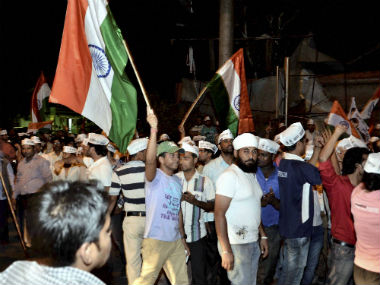For an outfit so used to street action and the language of confrontation, long periods of silence and inaction could be a scary prospect. It is the fear of break in the momentum that makes the Aam Aadmi Party so ill at ease with the idea of settling down to quiet introspection. The act of introspection brings up discomforting questions and opens up many fissures; and the party is still not prepared to face them. Nothing else explains the party’s action near Tihar jail after Arvind Kejriwal was sent to judicial custody after refusing to furnish a bail bond of Rs 10,000. By now it is apparent to the party’s think tank that it has nothing fresh to offer to people in term of ideas and novelty, and it can derive its relevance from hogging the limelight only. Popular goodwill is what has made AAP an incredible success story; it has managed to squander it. The party is aware that it would slip out of public consciousness if it does not get the eyeballs, it does not matter whether for reasons good or bad. So back to rebelling it is. Only this time the target is wrong. Attacking politicians and corporates is one thing and disagreeing with the judiciary is quite another. [caption id=“attachment_1536967” align=“alignleft” width=“380”] AAP supporters protesting outside Tihar Prisons over the arrest of party chief Arvind Kejriwal in New Delhi. PTI[/caption] Did Kejriwal expect the court to treat his as an exceptional case since he is an anti-corruption crusader? Obviously, no. He wanted to play the victim card and wear that halo of martyrdom again. The court said what he wanted to hear. “The court cannot act as a mute spectator when a particular litigant intentionally seeks to violate the procedure established by the law. This case cannot be treated with any difference than any other criminal case where the courts insist on furnishing bail bond…,” the district magistrate said. The AAP leader wanted to go to jail as it would provide a reason for the party to call to action the cadre which is tired after a long general election campaign and rather dispirited after the Delhi results. Had the court ruled otherwise, it would have disappointed Kejriwal. The political motive behind the move is transparent. The party wanted to revive the government – it is in suspended animation – to ward off the criticism that it was averse to handling responsibility and frivolous in its approach to power. But that looks impossible, so it had to be back on the streets again, doing what it is familiar with. The party did not win a single seat in its stronghold, Delhi, but it notched up a respectable vote share of close to 32 percent. That should be reminding the party that not everything is lost. With the Congress out of contention, it could emerge a potent challenger to the BJP. But for how long can the party go on resorting to the same strategy? Street protest has its limitation as a mass mobilization tool. After a point fatigue sets in and people see no logic in the exercise without concrete results. Why cannot the party find better ways to translate the considerable goodwill it still commands into votes? To begin with it can distance itself from its primarily disruptive agenda to a constructive, positive one. After forming a political party, the AAP leaders cannot still be under the illusion that they are heading a movement. They need to think deeply about the shift if they want to be players for the long-term. Introspection might throw up troubling questions but it brings in clarity. The party desperately needs a course correction and it is time it took a break and think afresh.
It is the fear of break in the momentum that makes the Aam Aadmi Party so ill at ease with the idea of settling down to quiet introspection.
Advertisement
End of Article


)
)
)
)
)
)
)
)
)



